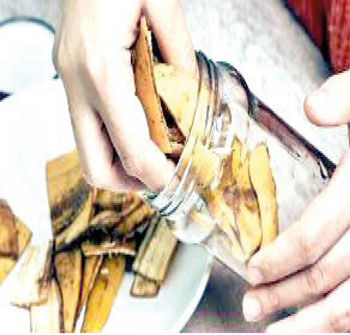Banana peels can be edible and are a rich source of dietary fiber, vitamins, antioxidants, and protein. A new study shows that substituting a small amount (7.5% to 15%) of wheat flour in cookies with flour made from banana peels increased antioxidants levels while reducing their fat content.
Enrichment of wheat flour with banana peel flour, especially at lower concentrations (7.5%), did not adversely impact the sensory properties, such as texture and taste.
These results suggest that the addition of banana peel flour could be a viable option for enhancing the nutritional properties of food items.
A recent study published in the journal ACS Food Science & Technology shows that substituting a small portion of wheat flour in cookies with banana peel flour enhanced the nutritional profile of the cookies without adversely impacting taste and texture. The incorporation of banana peel in the diet has the potential to reduce the emission of greenhouse gasses while providing health benefits.
“Banana peel consumption can benefit not only the grower (providing waste management solution), and the agricultural industry (generating income by converting waste material into value-added goods), but also contains a vast nutritional value that can deliver health benefits when consumed,” said Dr. Wolyna Pindi, a senior lecturer at Universiti Malaysia Sabah.
Bananas are the fourth most consumed food crop following rice, wheat, and maize. Banana peels account for nearly 35%Trusted Source of the weight of the fruit and generally end up in the trash bin or compost. However, banana peels contain high amounts of organic compounds, and their decomposition in landfills is a significant source of potent greenhouse gases such as methane.
Efforts to minimize waste have led to the utilization of banana peels for the production of biofuel, fertilizer, wastewater treatment, and other industrial applications. Banana peels are also edible and there has been a surge in interest in the use of banana peels as food to reduce waste.
In addition, the high levels of dietary fiber and antioxidants in banana peel make it a candidate for inclusion in a healthy diet. Specifically, banana peels contain high levels of phenolic compounds that have antioxidant properties and antimicrobial properties. These phenolic compounds may also have anti-inflammatory effects and potentially benefit individuals with diabetes and high blood pressure. Banana peels are also rich in protein, potassium, magnesium, vitamins, polyunsaturated fatty acids, and amino acids.










